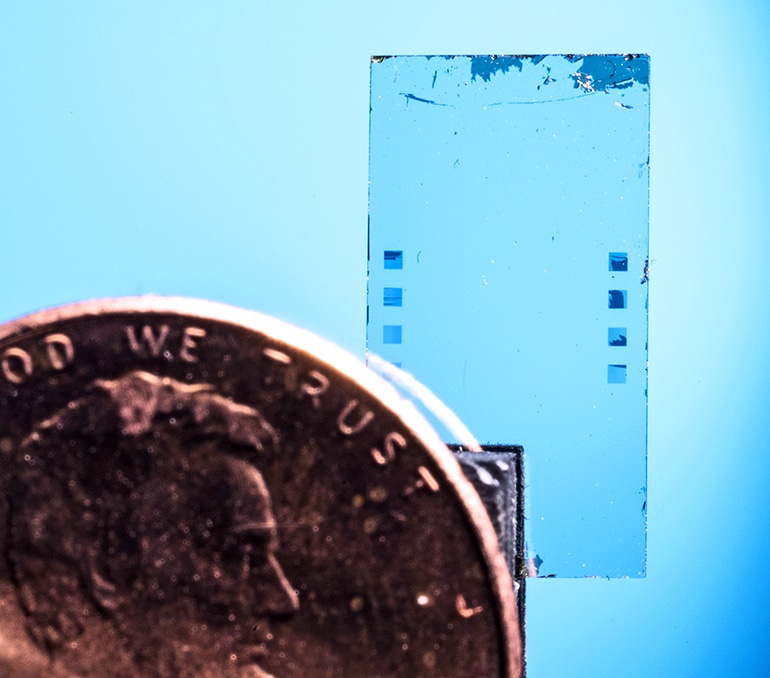A new device the size of a match head can bend light inside a crystal to generate synchrotron radiation in a lab.
When physicists bend very intense beams of charged particles in circular orbits near the speed of light, this bending throws off bits of light, or X-rays, called synchrotron radiation. The researchers used the device to bend visible light to produce light with a wavelength in the terahertz range. This range of wavelength is considerably larger than that of visible light, but much smaller than the waves your microwave produces—and can penetrate clothing.
Large-scale facilities usually generate synchrotron radiation, which are typically the size of several football stadiums. Instead, researchers Roberto Merlin and Meredith Henstridge’s team developed a way to produce synchrotron radiation by printing a pattern of microscopic gold antennae on the polished face of a lithium tantalate crystal, called a metasurface.

“The more terahertz sources we have, the better. This new source is also exceptionally more efficient, let alone that it’s a massive system created at the millimeter scale,” says Vlad Shalaev, professor of electrical and computer engineering at Purdue University.
The team used a laser to pulse light through the pattern of antennae, which bent the light and produced synchrotron radiation.
“Instead of using lenses and spatial light modulators to perform this kind of experiment, we figured out by simply patterning a surface with a metasurface, you can achieve a similar end,” says Merlin, professor of physics and electrical engineering and computer science at the University of Michigan.
‘In order to get light to curve, you have to sculpt every piece of the light beam to a particular intensity and phase, and now we can do this in an extremely surgical way.”
Anthony Grbic, professor of electrical engineering and computer science at the University of Michigan, led the team that designed the metasurface. Former doctoral student Carl Pfeiffer developed the metasurface.
Roughly 10 million tiny boomerang-shaped antennae comprise the metasurface. Each antenna is considerably smaller than the wavelength of the impinging light, says Henstridge, lead author of the study. The researchers used a laser that produces “ultrashort” bursts or pulses of light which last for one trillionth of a second. The array of antennae causes the light pulse to accelerate along a curved trajectory inside the crystal.
The light pulse creates a collection of electric dipoles—or, a group of positive and negative charge pairs. This dipole collection accelerates along the curved trajectory of the light pulse, resulting in the emission of synchrotron radiation, according to Henstridge, now a postdoctoral scientist at the Max Planck Institute for the Structure and Dynamics of Matter in Hamburg, Germany.
The researchers’ device produces synchrotron radiation that contains many terahertz frequencies because the light pulses travel just a fraction of a circle. But they hope to refine their device so that the light pulse revolves continuously along a circular path, producing synchrotron radiation at a single terahertz frequency.
The scientific community uses single-frequency terahertz sources to study the behavior of atoms or molecules within a given solid, liquid, or gas. Commercially, terahertz sources are used to scan items hidden in clothing and packaging crates. Drugs, explosives, and toxic gases all have unique “fingerprints” in the terahertz range that could be identified using terahertz spectroscopy.
The device’s uses aren’t limited to the security industry.
“Terahertz radiation is useful for imaging in the biomedical sciences,” Henstridge says. “For instance, it has been used to distinguish between cancerous and healthy tissue. An on-chip, single-frequency terahertz source, such as a tiny light-driven synchrotron such as our device, can allow for new advancements in all of these applications.”
The study appears in the journal Science. Additional researchers from Purdue University contributed to the study.
Source: University of Michigan, Purdue University



